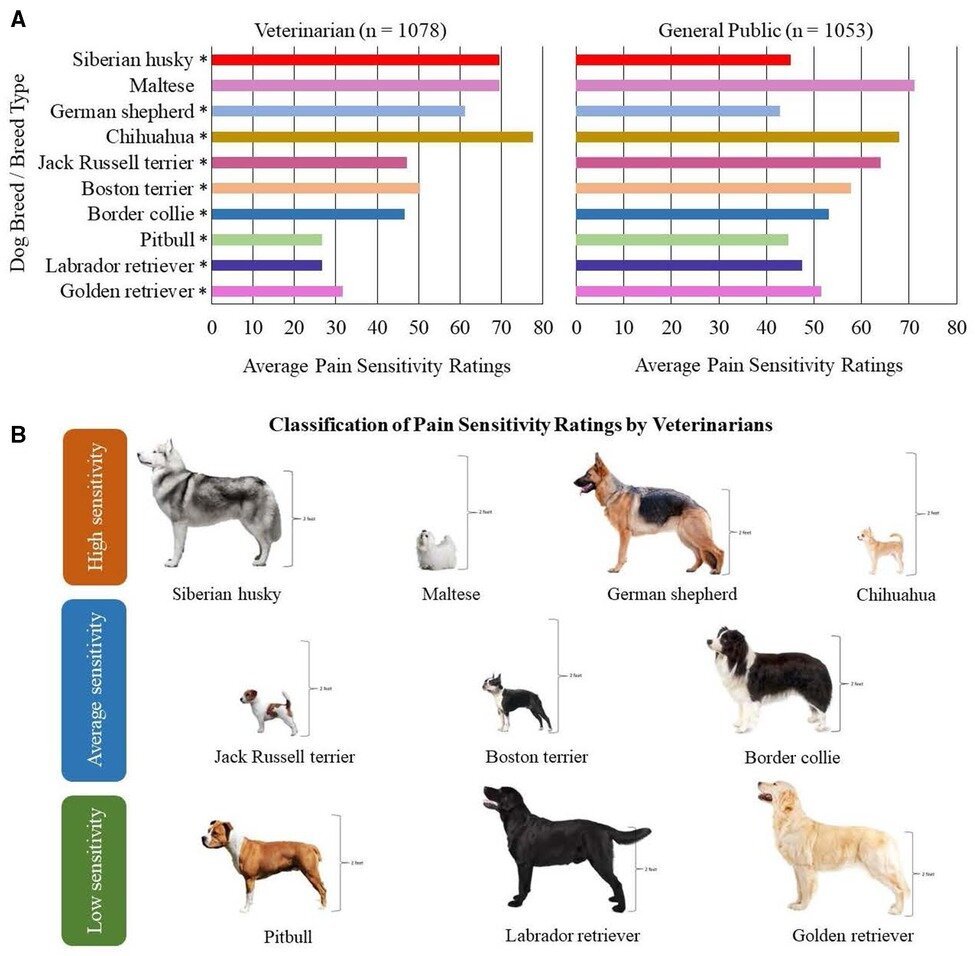A recent study conducted by North Carolina State University revealed that there are differences in pain sensitivity among dog breeds, but these differences do not always align with the beliefs held by people, including veterinarians, regarding breed-specific pain sensitivity. The findings, published in Frontiers in Pain Research, suggest that a dog’s temperament, specifically their interaction with strangers, may influence how veterinarians perceive breed pain sensitivity.
The researchers aimed to determine if the prevailing views on breed pain sensitivity were accurate by testing the sensitivity thresholds of 15 dogs from 10 breeds. These breeds were subjectively rated by veterinarians as having high, medium, or low pain sensitivity. A total of 149 dogs participated in the study.
To assess pain sensitivity, the researchers adapted methods used in human clinical medicine. They measured the dogs’ reaction to pressure and temperature stimuli applied to the top of their back paw using a pressure tool and a warm thermal probe. The stimulus was immediately withdrawn when the dog moved their paw. Each test was repeated five times to obtain accurate results.
Additionally, the researchers conducted two tests of emotional reactivity to replicate some aspects of a vet visit and gauge the dogs’ response to unfamiliar objects or people. The novel object test involved a moving and noise-making stuffed monkey, while the “disgruntled stranger” test featured a person engaged in a loud phone conversation before noticing and calling the dog over.
The results of the sensitivity tests were compared to questionnaires completed by veterinarians and the general public on breed pain sensitivity. The study revealed that there are indeed breed differences in pain sensitivity thresholds, but these differences do not always align with veterinarians’ rankings.
For instance, Maltese dogs were found to have a high sensitivity threshold, indicating low pain tolerance, which corresponded with veterinarians’ ratings. However, Siberian Huskies were believed to be highly sensitive by veterinarians, whereas the test results placed them in the mid-range. Surprisingly, several larger breeds that veterinarians considered sensitive actually exhibited average-to-high pain tolerance.
The researchers also observed that dogs less likely to engage in the novel object and disgruntled stranger scenarios were sometimes rated as having lower pain tolerance. This raises the possibility that a dog’s stress level and emotional reactivity during a vet visit could influence a veterinarian’s perception of pain tolerance for that breed.
The study highlights the existence of biological differences in pain sensitivity between dog breeds. It opens the door to exploring potential biological causes that could explain these differences and facilitate more effective treatment tailored to individual breeds. The findings also emphasize the importance of considering a dog’s anxiety levels in the veterinary setting, shedding light on why veterinarians may hold certain perceptions about breed sensitivity.
Source: North Carolina State University


